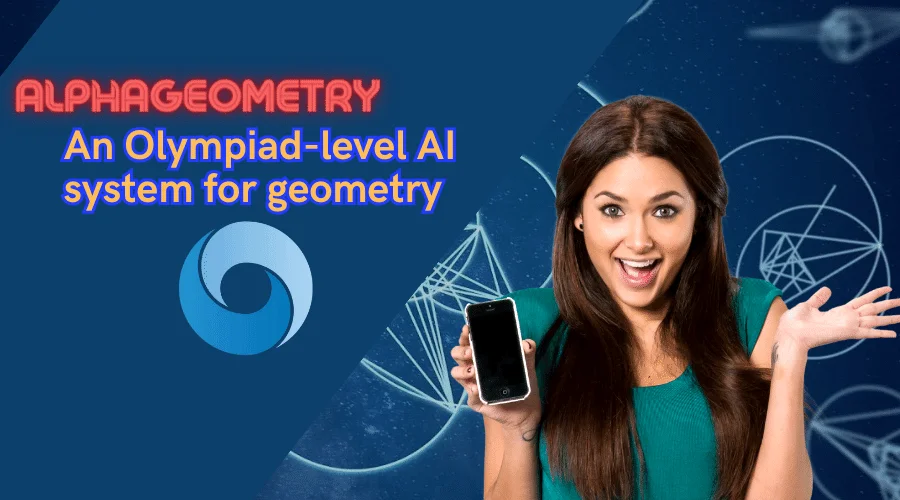DeepMind’s AI lab has created an artificial intelligence known as AlphaGeometry that can solve challenging geometry problems at an Olympiad level. This guide will provide an in-depth look at AlphaGeometry’s capabilities and the innovative techniques used in its development.
What is the International Mathematical Olympiad?
The International Mathematical Olympiad (IMO) is a prestigious international competition for high school students. Held annually, it features complex geometry and theorem problems that test even the brightest young mathematicians. Only the top-scoring students from each participating country are invited to compete. Solving IMO-level problems requires advanced logical reasoning and geometric intuition developed over years of rigorous study.
How Does AlphaGeometry Compare to Human Competitors?
To evaluate its abilities, AlphaGeometry was given 30 challenging geometry problems directly from past IMOs. It solved an impressive 25 problems within the allotted time limit, comparable to top human medalists who average around 26 solutions. This demonstrates that AlphaGeometry is capable of tackling the same caliber of insanely difficult geometry that only the world’s best math students can comprehend. Its performance rivals the top 1% of all IMO participants, an incredible feat for an AI system.
The Dual-Brain Architecture Behind AlphaGeometry’s Success
DeepMind designed AlphaGeometry with a unique dual-network structure that combines logical deduction with intuitive leaps. At the core is a neural network trained to recognize patterns and propose solution strategies. A separate rules engine then rigorously checks each step using formal mathematical proofs. This mimics how humans approach geometry – by forming hypotheses and rigorously verifying their validity. Having both conceptual thinking and step-by-step logical reasoning allows AlphaGeometry to solve problems like a human rather than relying solely on computation.
Read: Mastering the ChatGPT Verify Human Loop
How AlphaGeometry Learned Geometry From Scratch
To develop its strong geometric intuition, AlphaGeometry required immense training data – far more than exists in curated databases. DeepMind researchers developed an innovative self-supervised learning method where the AI autonomously generated over 100 million synthetic geometric examples. It started by randomly drawing points, lines, and shapes. Then it analyzed the relationships between elements to deduce new geometric rules and concepts on its own. This process of discovering patterns from example diagrams, like how students learn, resulted in a vastly larger and more varied training dataset than any human could compile. The scale and diversity of examples allowed AlphaGeometry to achieve a comprehensive and nuanced understanding of geometry.
Advancing Mathematical Reasoning and Discovery Through AI
DeepMind was thrilled to see AlphaGeometry exhibit both insightful leaps and rigorous logical consistency when solving problems – core skills for scientific progress. Research into empowering AI with strong reasoning abilities could revolutionize fields like math, physics and engineering. AlphaGeometry demonstrates AI may one day assist scientists by automating routine calculations, suggesting novel hypotheses, and even making original theoretical contributions through computational experimentation at vast scales. While still in early stages, AlphaGeometry hints at exciting potential for advanced AI to further mathematical and scientific knowledge through new forms of discovery and verification.
Future Directions and Impact
While AlphaGeometry has proven itself a geometry savant for now, DeepMind aims to generalize its skills to a wider range of mathematical subjects through continued learning. Just imagine the benefits if such an AI assistant could be developed to aid research across all quantitative disciplines. Though AlphaGeometry remains in research, its success establishing robust geometric reasoning offers hope that one day advanced AI may partner with humans to solve our species’ greatest challenges through cooperation instead of competition. Implementing self-supervised training methods like AlphaGeometry’s also advances our understanding of how to teach AI broader concepts from sustainable, autonomy-generated data. Overall, DeepMind’s breakthrough points toward an AI-augmented future with powerful tools to push the boundaries of math, science and beyond.
Now Read: Can Canvas Detect ChatGPT?
Key Takeaways
To summarize, some of the most important lessons from AlphaGeometry include:
- Dual network architectures combining intuitive and logical reasoning can solve complex problems like experts
- Self-supervised learning from auto-generated examples enables training AI without limitless human data
- Advanced mathematical AI has the potential to revolutionize scientific discovery through computational experimentation
- Techniques like AlphaGeometry’s set a precedent for teaching AI broader concepts and skills
- Continued progress may one-day yield AI partners to assist researchers across all domains of science
Overall, AlphaGeometry shows how generative self-supervision and ingeniously human-like reasoning can empower AI to achieve Olympiad-level abilities in geometry – demonstrating promising directions for collaborative AI-human scientific progress.
Frequently Asked Questions
How was AlphaGeometry evaluated against human competitors?
It was given 30 difficult geometry problems directly from past IMO exams to solve and scored based on the number completed within the time limit, matching the evaluation method used for human participants.
What are the limitations of AlphaGeometry?
Currently, it has only mastered geometry and cannot generalize those skills. The team’s goal is to expand its abilities to other mathematical domains through continued learning.
How big was AlphaGeometry’s training dataset?
Through self-supervised generation, it autonomously compiled over 100 million unique examples of geometric diagrams, relationships, and formal proofs to learn from – far larger than any human-compiled collection.
Could AlphaGeometry replace human mathematicians?
No, the goal is for AI to collaborate with and augment human abilities, not replace them. AlphaGeometry is still narrow in scope and humans remain better at generalizing, hypothesizing, and making subjective judgments.
Will AlphaGeometry’s techniques be applied to other types of problems?
DeepMind hopes to generalize lessons about dual reasoning systems and self-supervised learning to progressively more complex sciences. The long-term vision is collaborative AI partners across all domains.
How can I learn more about DeepMind’s work?
Check their website at deepmind.com or search for papers on “AlphaGeometry” and “self-supervised learning” from DeepMind researchers on arXiv.org.
